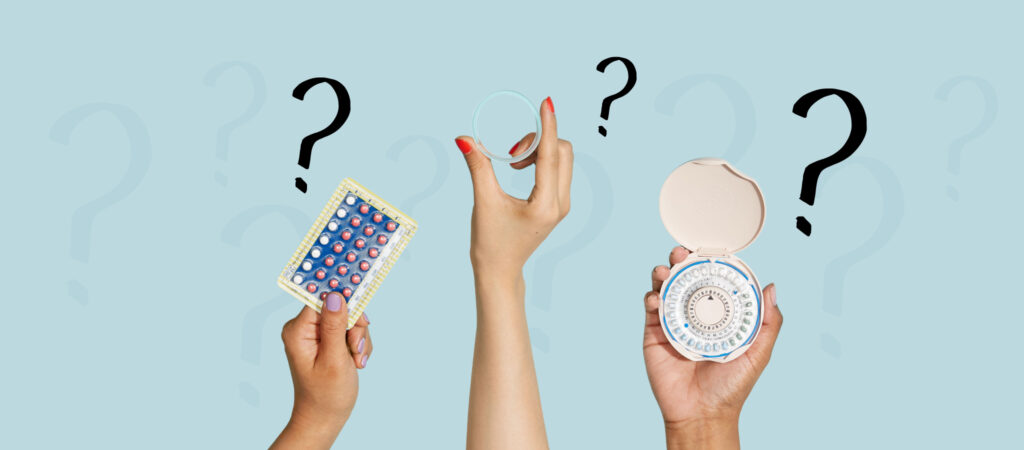Birth Control Methods
Need a medically-accurate overview of your birth control options? We have you covered.

Medically reviewed by Dr. Nancy Shannon, MD, PhD on August 10, 2020
For women, the number of birth control methods available today is a double-edged sword: there are more options than ever to choose from, but that can make it difficult to know which one is best for you.
Birth control is not a one-size-fits-all thing; different women prefer different methods, and it’s difficult to predict exactly which option will suit your needs the best. The good news is that with an abundance of safe and affordable methods, it’s hard to go wrong — you just have to know what you’re looking for.
The first step is knowing what your choices are. Some of the most popular hormonal birth control methods include:
Birth control from Nurx costs as little as $0 with insurance or $15 per month without insurance.
Birth Control Pills
Birth control pills are far and away the most commonly used method of hormonal birth control, and it’s easy to see why. When taken exactly as prescribed, the pill is up to 99% effective at preventing pregnancy and usually makes periods lighter and reduces premenstrual symptoms. They’re also generally the cheapest form of birth control, with affordable out-of-pocket prices even for women without insurance.
While the most common birth control pills are combination pills — meaning they combine both estrogen and progestin — there are progestin-only pills, also known as minipills, available too. Some women, such as women over the age of 35 who smoke, are advised against taking estrogen because it may put them at higher risk of stroke or other health problems. This makes the minipill the right choice for them.
The Shot
One of the methods quickly growing in popularity is the shot, a simple and effective way to keep yourself protected from unwanted pregnancy. The shot works by steadily releasing progestin into the body, halting ovulation and thinning the uterine lining to prevent fertilization. Unlike some of the other options on this list, the shot does not contain estrogen and therefore does not cause any of the side effects associated with that hormone, and is a safe choice for women who can’t take estrogen.
One of the best things about the shot is that it leaves little room for error. Simply get a new injection every 3 months, and you’re fully protected: when taken on schedule, fewer than 1 in 100 women who use the shot will get pregnant. Women who don’t want to have to mess with their birth control on a daily or weekly basis but aren’t ready for a years-long commitment should consider the benefits that the shot offers them. You can either get the shot at a healthcare provider’s office, or give yourself the shot at home. The at-home version of the birth control shot is subcutaneous, meaning you inject it just beneath your skin.
The Patch
The patch works like combination birth control pills by releasing progestin and estrogen into the body directly through the skin. Compared to the pill, the patch is a lower-maintenance birth control method: simply put one patch on your skin and replace it weekly. Like many of the other options on this list, the patch is 99% effective when used appropriately.
The patch is a good balance between the pill, which needs to be taken daily, and the shot, which lasts for several months at a time. Women who are looking for a birth control method that doesn’t require daily doses but can also be stopped at any time should consider the flexibility that the patch offers.
The Ring
A birth control ring releases its hormones after being inserted directly into the vagina. Women who use the ring can’t feel it as they walk around or have sex, so there’s no need to worry about it interfering with your daily life. The ring contains both estrogen and progestin, so women who can’t take the former should consider other options.
The ring is removed after 3 weeks, then you take a one-week break to have a period. The NuvaRing needs to be replaced each month and the newer Annovera can be reused for an entire year. The ring is 99% effective at preventing pregnancy.
IUDs
The intrauterine device, or IUD, is a long-acting, reversible contraceptive that stays inside your uterus for years. The most commonly used form of the IUD releases a pregnancy-preventing hormone (progestin) steadily into the uterus. Unlike the other methods listed above, the IUD must be administered by a doctor in order for it to be used. Most IUDs maintain a 99% effectiveness rate for between 3 and 10 years, though in rare cases the device will slip out of place after insertion and need to be replaced or removed.
Though most IUDs work by secreting progestin into the body, not all IUDs are hormonal. The older form of IUD is made of copper, which is toxic to sperm. These non-hormonal IUDs are just as effective as the other methods on this list and are great options for women looking to protect themselves without altering their hormone levels.
Contraceptive Implant
The birth control implant is a thin rod that, once inserted under the skin of the upper arm by a medical professional, releases small doses of progestin into the body. Like the IUD, the birth control implant stands out from the pack due to the fact that it prevents all possibility of user error — after insertion, you’re free to forget about it entirely.
Also like the IUD, the implant is absolutely a long-term option; most last for between 3 and 5 years. While the implant can be removed at any time, it is generally only recommended for women who don’t plan on becoming pregnant in the immediate future.
Though every method on this list is highly effective at preventing pregnancy, none are reliable protection against STIs. In addition, the efficacy of some of these methods can drop significantly when not used exactly as prescribed.
If you’re still on the fence about which method is right for you, contact one of our medical professionals who can answer any questions you may have about what your next step should be.







